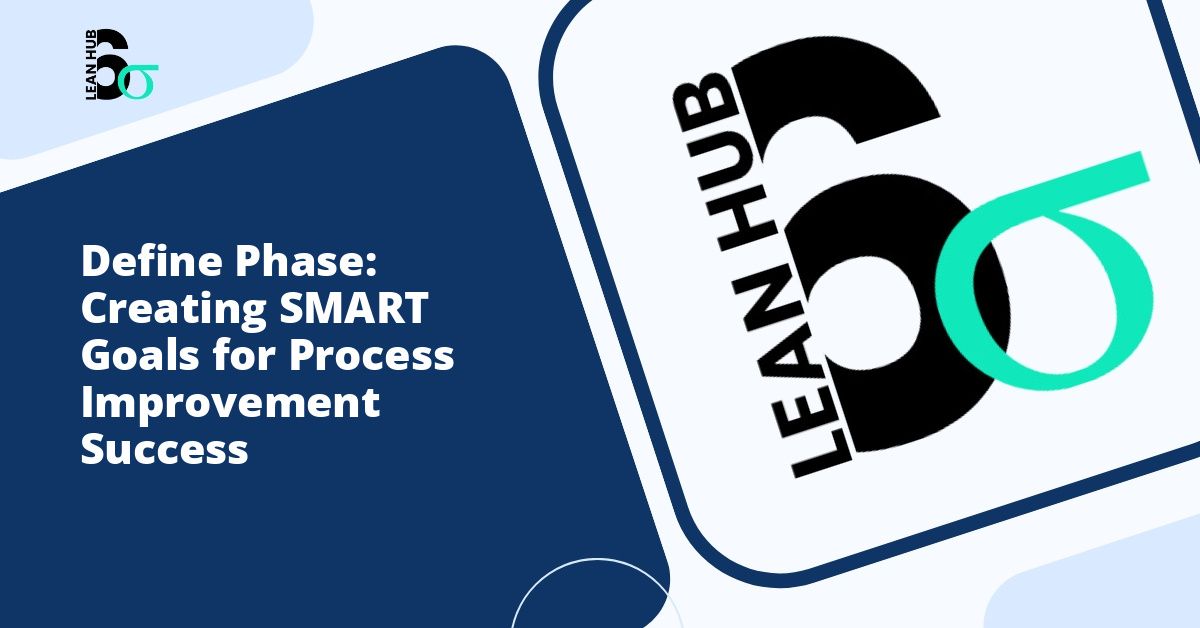The Define phase serves as the foundation of any successful Lean Six Sigma project. As the first step in the DMAIC (Define, Measure, Analyze, Improve, Control) methodology, this critical stage sets the trajectory for the entire improvement initiative. Understanding and utilizing the right tools during this phase can mean the difference between a project that delivers measurable results and one that loses direction before reaching completion.
For organizations seeking to recognize phase requirements and establish clear project parameters, mastering these essential Define phase tools becomes paramount. This comprehensive guide explores ten fundamental tools that every Six Sigma practitioner must have in their arsenal to launch successful improvement projects. You might also enjoy reading about Stakeholder Analysis in Six Sigma: A Complete Guide to Identifying and Managing Key Players.
Understanding the Define Phase in Lean Six Sigma
Before diving into the specific tools, it is important to understand what the Define phase accomplishes. This initial stage focuses on identifying the problem, establishing project goals, and determining the scope of the improvement initiative. A well-executed Define phase ensures that all stakeholders share a common understanding of what needs to be accomplished and why it matters to the organization. You might also enjoy reading about Define Phase vs. Traditional Project Kickoff: Why DMAIC Wins Every Time.
The Define phase typically consumes 10 to 15 percent of the total project timeline, yet its impact on project success cannot be overstated. Projects that rush through this phase often encounter scope creep, stakeholder misalignment, and unclear success criteria that plague them throughout their lifecycle. You might also enjoy reading about Lean Six Sigma Define Phase: The Complete Guide for 2025.
The 10 Essential Define Phase Tools
1. Project Charter
The project charter stands as the cornerstone document of any Lean Six Sigma initiative. This comprehensive tool captures the essential elements of the project, including the business case, problem statement, goal statement, project scope, and team roles. A well-crafted project charter serves as a contract between the project team and organizational leadership, ensuring alignment from the outset.
The charter typically includes sections for the project timeline, estimated benefits, resource requirements, and key milestones. By documenting these elements early, teams create a reference point that guides decision-making throughout the project lifecycle.
2. SIPOC Diagram
The SIPOC (Suppliers, Inputs, Process, Outputs, Customers) diagram provides a high-level view of the process under investigation. This powerful visualization tool helps teams recognize phase boundaries and understand how the process fits within the larger organizational ecosystem.
By mapping out suppliers who provide inputs, the process steps that transform those inputs, the outputs generated, and the customers who receive those outputs, teams gain crucial context. This tool prevents teams from diving too deeply into process details prematurely while ensuring they understand the broader system dynamics at play.
3. Voice of the Customer (VOC) Tools
Understanding customer requirements forms the bedrock of any improvement initiative. Voice of the Customer tools encompass various methods for gathering, organizing, and prioritizing customer needs and expectations. These tools might include surveys, interviews, focus groups, observation studies, and customer complaint analysis.
The VOC process translates often vague customer statements into specific, measurable requirements that can guide improvement efforts. Without this critical translation, teams risk solving problems that do not align with actual customer priorities.
4. Stakeholder Analysis
Every Six Sigma project operates within a complex web of stakeholder interests and influences. Stakeholder analysis tools help teams identify who will be affected by the project, assess their level of influence and interest, and develop appropriate engagement strategies.
This systematic approach to stakeholder management prevents surprises later in the project when previously overlooked stakeholders suddenly raise objections or concerns. By mapping stakeholders early and planning engagement activities, teams build the support network necessary for successful implementation.
5. Problem Statement Development Tool
A clear, concise problem statement articulates exactly what issue the project intends to address. Effective problem statements describe the current state, quantify the gap between current and desired performance, and explain the impact on business objectives.
Problem statement development tools guide teams through a structured process of refining their understanding of the issue. These tools help avoid vague descriptions like “customer satisfaction is low” in favor of specific statements such as “customer complaint rates have increased by 35 percent over the past six months, resulting in an estimated revenue loss of $250,000 annually.”
6. Goal Statement Framework
While the problem statement describes the current undesirable situation, the goal statement articulates the desired future state. A properly constructed goal statement specifies what will be accomplished, by how much, and by when. It transforms the general aspiration for improvement into concrete, measurable targets.
The goal statement framework ensures teams set ambitious yet achievable targets that align with organizational priorities. This tool prevents the common pitfall of establishing goals that are either too vague to measure or so aggressive that they discourage the team from the outset.
7. In-Scope/Out-of-Scope Analysis
Scope definition represents one of the most challenging aspects of project planning. The in-scope/out-of-scope analysis tool provides a structured method for establishing clear boundaries around what the project will and will not address.
By explicitly documenting both what falls within the project boundaries and what remains outside them, teams prevent scope creep and manage stakeholder expectations. This clarity proves especially valuable when well-meaning stakeholders suggest expanding the project to address additional issues.
8. CTQ (Critical to Quality) Tree
The CTQ tree translates broad customer requirements into specific, measurable characteristics. This hierarchical tool starts with high-level customer needs and progressively breaks them down into detailed requirements that can be measured and improved.
For example, a general customer need for “fast service” might decompose into specific CTQs such as “call answered within 30 seconds,” “issue resolved on first contact,” and “follow-up completed within 24 hours.” This translation enables teams to recognize phase objectives and focus improvement efforts on factors that truly matter to customers.
9. High-Level Process Map
A high-level process map provides a visual representation of the major steps in the process under investigation. Unlike detailed process maps created during later phases, this tool offers a 30,000-foot view that helps teams understand the basic flow without getting lost in minutiae.
This mapping exercise often reveals disconnects in team members’ understanding of the current process. By achieving consensus on the high-level process flow early, teams establish a common foundation for more detailed analysis in subsequent phases.
10. Communication Plan
Effective communication throughout the project lifecycle begins with a comprehensive communication plan developed during the Define phase. This tool specifies what information will be communicated, to whom, how frequently, and through which channels.
A robust communication plan ensures that stakeholders remain informed and engaged throughout the project. It prevents communication gaps that can undermine support and creates accountability for keeping all parties updated on progress, challenges, and changes.
Integrating Define Phase Tools into Your Lean Six Sigma Practice
While each of these ten tools serves a distinct purpose, their true power emerges when used as an integrated system. The project charter draws upon insights from stakeholder analysis, VOC research, and SIPOC diagrams. The problem and goal statements connect directly to CTQ requirements and scope definitions. The communication plan ensures that all stakeholders understand the decisions captured in these various tools.
Successful Lean Six Sigma practitioners develop fluency with these tools through repeated application. Initial attempts may feel mechanical or time-consuming, but with practice, the tools become natural extensions of strategic thinking about improvement opportunities.
Conclusion
The Define phase tools outlined in this article represent essential capabilities for any Six Sigma practitioner committed to launching successful improvement projects. By investing time and effort to properly recognize phase requirements and apply these tools systematically, practitioners establish the strong foundation necessary for projects that deliver meaningful, sustainable results.
Organizations that embrace rigorous Define phase practices position themselves to maximize their return on Lean Six Sigma investments. The hours spent clearly defining problems, establishing goals, understanding customer requirements, and engaging stakeholders pay dividends throughout the project lifecycle and beyond. As you develop your Six Sigma practice, make mastery of these ten essential tools a priority, and watch as your project success rates climb accordingly.








